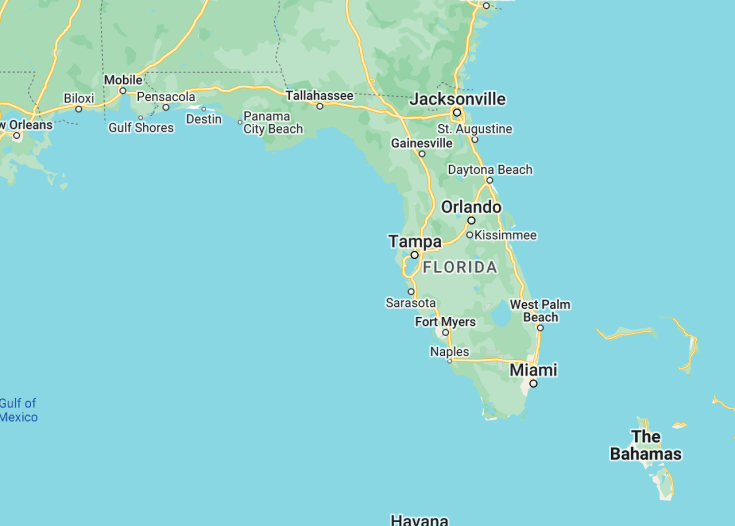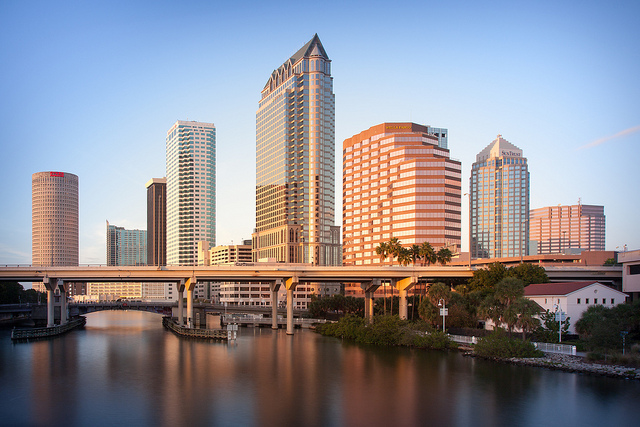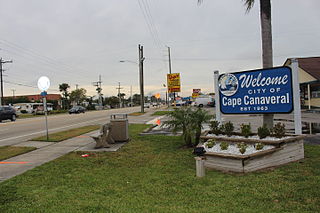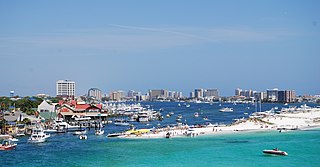Florida: A Sunshine State Retreat
Discover the magic of Florida’s beaches and vibrant cities. From the allure of Miami’s nightlife to the natural wonders of the Everglades, this diverse state offers endless adventures.
Don’t forget to indulge in a delicious key lime pie while visiting Florida. It’s a sweet treat that has become synonymous with the state’s culinary scene.
Top destinations in Florida (USA)
Florida (USA): The Sunshine State
| Capital | Tallahassee |
| Time in Florida (USA) | GMT -5 |
| Language spoken | English |
| Population | 21,538,187 (United States Census Bureau, 2020) |
| Religion | Christianity (65%) Judaism (3.3%) Islam (1%) Other religions (2.6%) |
| Currency | United States Dollar (USD) |
| Airports | Orlando International Airport Miami International Airport Fort Lauderdale–Hollywood International Airport Jacksonville International Airport |
Florida is a captivating destination that offers something for everyone. With its stunning beaches, vibrant cities, and diverse natural landscapes, Florida is known as the Sunshine State.
Where is Florida located?
Located in the southeastern region of the United States, Florida borders the Atlantic Ocean to the east and the Gulf of Mexico to the west. It is known for its tropical climate and is a popular vacation spot.
What is Florida famous for?
Florida is famous for its beautiful beaches, such as Miami Beach and Clearwater Beach. It is also home to popular tourist attractions like Walt Disney World, Universal Orlando Resort, and the Kennedy Space Center. Florida’s Everglades National Park is a unique ecosystem that is recognized as a UNESCO World Heritage site.
History
The history of Florida dates back thousands of years, with evidence of Native American settlements dating back to 14,000 BC. The first European contact with the area occurred in the early 16th century when Spanish explorer Juan Ponce de León arrived in search of the legendary Fountain of Youth. He claimed the land for Spain and named it “La Florida,” meaning “flowery land” in Spanish.
Florida remained a Spanish territory until 1763, when it was ceded to the British in the Treaty of Paris. However, the British rule was short-lived, and Florida was returned to Spain in 1783. In the early 19th century, Florida became a haven for pirates and smugglers due to its strategic location and abundance of hidden coves and inlets.
(1819-1845) Territorial Period and Statehood
In 1819, Spain agreed to sell Florida to the United States in the Adams-Onís Treaty. The transfer of power took place in 1821, and Florida became a U.S. territory. Plantations and slave labor fueled the economy, and the population grew steadily during this period. In 1845, Florida was admitted as the 27th state of the United States.
(1861-1865) American Civil War
Florida seceded from the Union and joined the Confederate States of America in 1861. It played a vital role in supplying the Confederacy with food and supplies throughout the war. However, Florida’s strategic importance led to frequent attacks by Union forces, particularly in coastal areas.
(Late 19th – Early 20th century) Land Boom and Growth
The late 19th and early 20th centuries saw a significant population increase in Florida. The construction of railroads and the discovery of phosphate and oil deposits attracted settlers and investors to the state. The tourism industry also began to flourish, with visitors drawn to Florida’s warm climate and natural beauty.
(1920s) Florida Land Boom and Great Depression
In the 1920s, Florida experienced an intense land boom. Speculators flooded the state, buying and selling land at inflated prices. However, the bubble burst in 1926, followed by the devastating impact of the Great Depression. Many Floridians lost their homes, jobs, and savings, leading to economic hardship throughout the state.
(1940s-1960s) Military Importance and Growth
During World War II, Florida became a crucial military base for the United States. Numerous military installations and defense industries were established, leading to a population boom and economic growth. After the war, Florida experienced further development and became a popular retirement destination.
(1960s-Present) Tourist Mecca and Urbanization
Since the 1960s, Florida has solidified its reputation as a top tourist destination. The development of attractions such as Walt Disney World, Universal Orlando Resort, and the Kennedy Space Center drew millions of visitors each year. Urbanization also spread rapidly, with cities like Miami, Tampa, and Orlando experiencing significant growth and cultural diversity.
Visit Florida
What to see and do in Florida.
Florida offers a diverse range of attractions and activities for visitors to enjoy. Here are some popular options:
- Explore the beautiful beaches along the Florida coastline, such as Miami Beach, Clearwater Beach, and Daytona Beach.
- Visit the magical world of Walt Disney World and other theme parks in Orlando, including Universal Orlando Resort and SeaWorld.
- Discover the unique ecosystem of the Everglades National Park and take an airboat ride to see alligators and other wildlife.
- Experience the vibrant nightlife and cultural scene of Miami, known for its art deco architecture, world-class restaurants, and trendy nightclubs.
- Go shopping in the luxury boutiques of Worth Avenue in Palm Beach or explore the diverse shopping malls in Miami.
- Explore the historic neighborhoods of St. Augustine, the oldest continuously occupied European-established settlement in the United States.
- Take a cruise from one of Florida’s major ports, such as Miami or Port Canaveral, and explore the Caribbean or the Bahamas.
- Attend a sporting event, such as a Miami Heat basketball game or a Tampa Bay Buccaneers football game.
Annual Events in Florida (USA)
Florida is known for hosting a variety of exciting events throughout the year. Some notable events include:
- Florida Strawberry Festival in Plant City (February-March) – A celebration of the strawberry harvest with live entertainment, arts and crafts, and delicious strawberry treats.
- South Beach Wine & Food Festival in Miami Beach (February) – A food and wine festival featuring renowned chefs, tasting events, and seminars.
- Daytona 500 in Daytona Beach (February) – One of the most prestigious motor racing events in the world, attracting racing fans from around the globe.
- Gasparilla Pirate Festival in Tampa (January-February) – A lively pirate-themed parade and festival celebrating the legend of José Gaspar, the “last of the Buccaneers.”
- Miami Art Week (December) – A week-long event showcasing contemporary art from around the world, including the renowned Art Basel Miami Beach.
- Florida State Fair in Tampa (February) – A classic American fair with carnival rides, live music, agricultural exhibits, and delicious fair food.
Best time to visit Florida
The best time to visit Florida is during the winter months, from November to April. The weather is pleasantly warm, with average temperatures ranging from the 70s°F (20s°C) to the 80s°F (high 20s to low 30s°C). This is also the peak tourist season, so expect larger crowds and higher prices.
Spring and fall can also be good times to visit, as the weather is mild and there are fewer tourists. However, be aware that Florida’s hurricane season runs from June to November, with the highest risk in August and September.
Is Florida worth visiting?
Florida is definitely worth visiting for its diverse range of attractions and natural beauty. From stunning beaches and world-class theme parks to vibrant cities and unique ecosystems, Florida offers something for everyone.
However, it’s important to note that Florida can be very crowded during peak tourist seasons, and some areas may be heavily developed or commercialized. Additionally, the weather can be hot and humid during the summer months, and there is a risk of hurricanes during hurricane season.
Overall, Florida’s unique combination of tropical climate, cultural diversity, and exciting attractions make it a popular destination for tourists from around the world. Whether you’re seeking relaxation on the beach or thrilling adventures in the theme parks, Florida has something to offer.


















